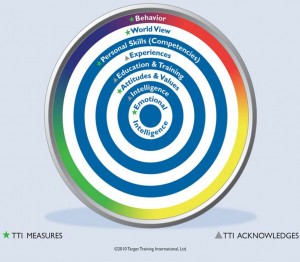Congratulations, you’ve followed an effective process to get the right candidates into interviews, interviewed well, checked all the data you can find on the candidate, made an offer, and it was accepted. You should feel good about yourself – you are done, right? Wrong. You are not done until the candidate shows up for work and gets through Day 1.
We haven’t had a hot hiring market for a while, but if you make an offer to the perfect candidate, you need to ensure that she will show up. Here’s how to make sure she comes aboard:
1. Make a competitive offer that the candidate will happily accept. It may include an unexpected bonus just to get the candidate excited about the job. Tell her that you fought for more incentives, as a way to motivate her.
2. Now ask – “With this offer, are you motivated to come onboard? Is there anything preventing you from accepting this offer right now and starting here ASAP?” If there is anything other than excitement, dig further. “Are you waiting for other offers?” If yes, ask, “What are you hoping for from the other offer?”
3. Who is making the decision? “Is this decision yours alone? Does anyone else have a say in this decision?” Even if she says no, ask, “What will your spouse think of this decision? Will your spouse be fully supportive?” If there is hesitation, you don’t have a deal yet.
4. If #2 is not a solid answer, walk the candidate through this process:
a. “What will your spouse say?”
b. “Why are you accepting this offer? Is it a better opportunity than your current job or any other opportunity? Be ready to tell your spouse why this job is a better fit. Do you think the reasons are convincing? Why is this transition good for your family?”
c. Is there anyone else who will influence this decision? Walk through b. above again for this person.
5. Now ask if currently employed – “When you give your notice for your current position, what reaction do you expect?”
a. “Will they be happy for you?”
b. “Will they want you to stay more than 2 weeks?” or “Will they be unhappy and walk you to the door?”
c. “Will they counter-offer with, ‘What will it take for you to stay?’” (This question will expose whether you are being used to get a raise at the current position.)
i. “If they do, what will you do?”
ii. “If you decide to stay,
1. do you think your wanting to leave will shake the trust they have in you? If so, do you think that may put a target on your back?”
2. “Will the reasons that you want to leave now change? Will you want to leave only a few months from now when nothing really changes?”
iii. I recommend that you go in and tell them, “I’m giving my notice today. I’ve given this a lot of thought, and this is an opportunity that is great for me. I’ve put a lot of thought into this and my mind is made up.
iv. If they push further, tell them, “There is nothing you can say that will convince me to stay. I am excited for the transition and so is my family. Please don’t try to jump through hoops to keep me. It may be flattering to me, but the basic reasons for leaving will not change.”
1. The candidate is saving them all the work that it would take to counter offer.
a. (By the way, if the old company counter offers, the candidate will look to you to sweeten the deal. Nip that in the bud. That is why you tell them up front that you fought for them and gave them a very good, motivating offer. She is less likely to come back asking for more if she feels you’ve already fought for her.)
2. If she rejected the counter offer, more bad feelings would result. Terms like ungrateful and manipulative may be used.
6. To test the eagerness of the candidate, ask – “Would you like some pre-work that you can do before you arrive to ensure you hit the ground running?”
a. If she answers yes, you should feel pretty good that she will show up.
b. If she answers no, pause and let her fill in the dead air. She’ll either reconsider or answer why she will not have time to look at it before she starts.
c. Either way, this question will give you more comfort depending on the answer.
7. To really seal the deal, send flowers to the house with a note, “Welcome to our family, you’ll make us even better.”
a. If there was any doubt in her mind, her guilt and/or her spouse’s will prevent any reconsideration.
b. This gives the spouse confidence that the new company cares and that the right choice was made.
c. An alternative (or supplement) would be to send some company clothing that can help them envision being part of the team.
And you thought you were done when you gave an offer!
Follow this process, and your star prospects will show up eager to contribute immediately.


 I use
I use 